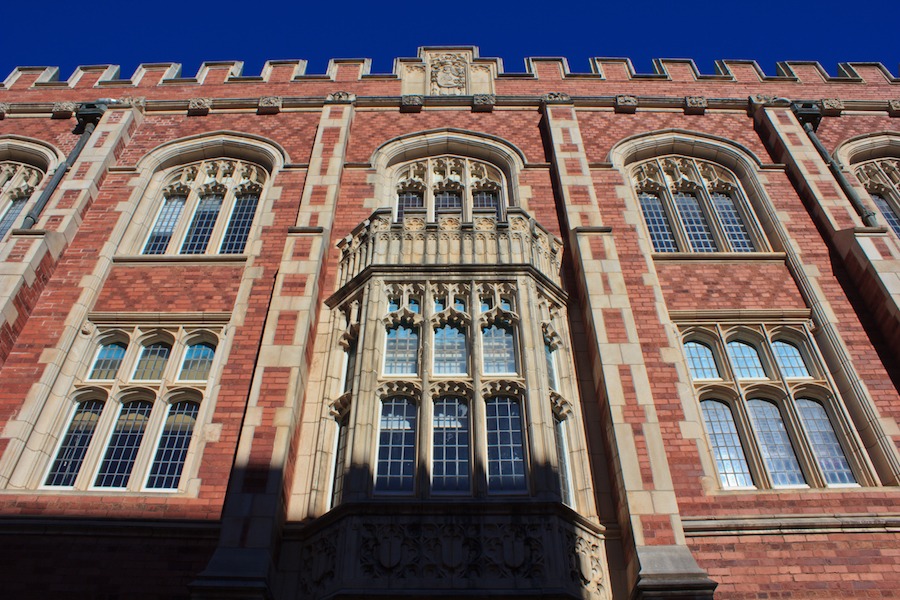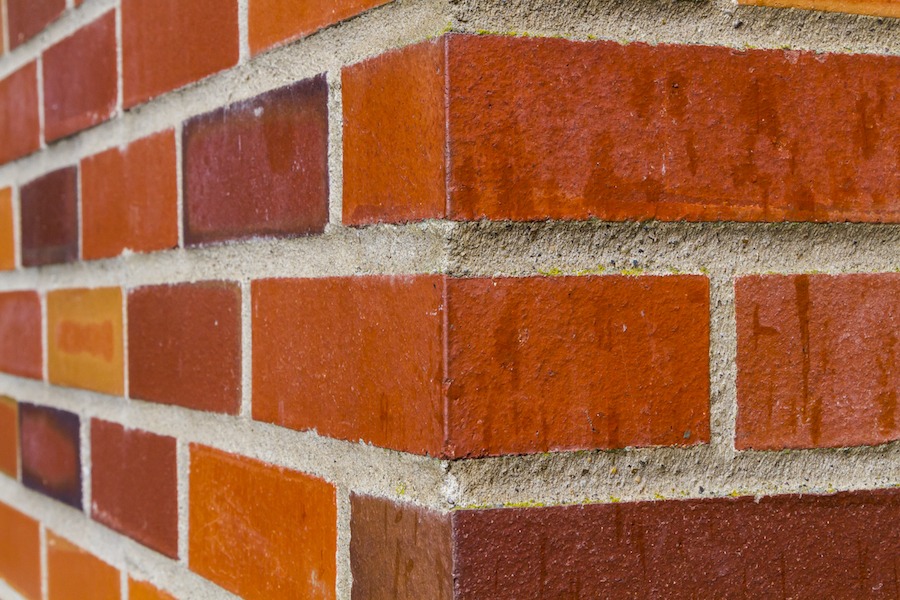Mortar comes from Latin mortarium meaning crushed, and indeed, the early mortar makers blended crushed clay and mud. It has been documented as long ago as 6500 BCE at the Mehrgarh ruins in Balochistan in Pakistan, constructed of sun-dried bricks and some form of mortar. For those who have may have wondered how the Egyptians moved some of those gigantic rocks into place for their pyramids and other monstrous structures, think: Mortar. Clever builders that they were, they placed gypsum mortars down to lubricate the path on which large stones would travel. Once in position, however, they might switch to lime mortar for its hardness quality as it aged, as long as it was not under water. The Romans created hydraulic mortars for their elaborate system of aqueducts by adding a pozzolan like brick dust or volcanic ash to lime.
In 1824, the British mason and builder Joseph Aspdin patented portland cement, a unique blend of limestone, clay and minerals in specific proportions. It was more consistent and exhibited more strength than natural cement in mortars, but wasn’t especially easy to work with. Once added to lime mortars, however, the hybrid product was both easy to handle and stronger once cured. Fast forward to 1951 when the American Society of Testing and Materials published its standard C270, still used today. It identifies the five types of mortar all masons know, designated by letters from MaSoN wOrK — M, S, N, O, K (from highest compressive strength to lowest).
Water Repellant
Mortars more resistant to water have been developed for applications where mortar will be exposed to above average contact with water. “Water repellents are used in mortar to slow the movement of water through the mortar joint,” states Nick Blohowiak, National Sales Manager – Masonry, SPEC MIX, a Quikrete Company.
“It is generally used on mortar that is used in combination with water repellent masonry units and in situations where there is concern that the mortar will have an elevated exposure to water. If the masonry units are water repellent, and the mortar used in combination with the water repellent block does not have water repellent in it, the mortar can effectively act like a sponge while the block will act like a pane of glass. When then washing this masonry system, the block will shed the cleaning solution while the mortar will pull it in leading to accelerated deterioration of the mortar joint due to the cleaning chemicals. If the mortar has water repellent in it, it too will shed the cleaning solution in a way that is similar to the masonry unit and the masonry system will remain as intended by the designer after the cleaning process.”
New technologies within Amerimix’s portfolio are viewed as a component to sound wall system design vs. stand-alone product. “Mortar, we feel, is an active component in modern masonry projects vs. a commodity afterthought – how can it can help solve job site challenges when used in conjunction with other Echelon products?” queries Joey Peters, Masonry Brand Manager at Oldcastle APG.
“One example is our partnership with ACM Chemistries and their RainBloc system. At the production facility, integrated water repellants are added to the block itself before leaving the yard. Once delivered, the block can be paired with our GP RainBloc mortar, which also contains water repellant technologies. These two components, once installed as a system, offer a superior water resistance solution – earning an E rating from the National Concrete Masonry Association.”
“We didn’t stop at performance, however,” he continues. “Another challenge on a jobsite is liability. How can you know a given product performed as advertised? In the event of a failure, you need answers. RainBloc GP contains a tracer component, which allows you to easily verify that the mortar specified is the mortar that’s used—even after the mortar has hardened. If the mortar can be verified, that eliminates one component to research when an issue arises, eliminating another step on the job site.” This RainBloc system can be found in many structures, including Levi’s Stadium in Santa Clara, Calif., home of the NFL’s San Francisco 49ers.
Color
Claude Monet, founder of the French impressionist painting movement, once stated: “Color is my day-long obsession, joy and torment.” No doubt, it’s the same for architects, designers and masons who seek to think outside the brick and embrace something with a little more punch than what some might call “standard issue gray” for mortar. From rainbows to rocks and sunsets to seascapes, colors impact our world, our mood, our identity, even our buildings. No one said bricks have to be reddish. Red bricks are traditional, timeless and classic, but many bricks run the gamut from creamy and tan to shades of rust, burgundy, brown, gray and black. The mortar that holds them together can also provide a style statement in color.
Amerimix offers 36 mortar colors in attractive shades of pewter gray, sandy beige and terra cotta in appealing names like polar frost, river mist, deep taupe, mystic gold, sunset rose, mocha, domino and driftwood. “Similar to how paint manufacturers have honed their matching technology, Amerimix operates a color lab where specific colors can be formulated based on the need of a project,” states Peters.=” “We can match color across the country based on geography, weather considerations or the historical makeup of a design. For example, restoration work might require a certain shade or aged texture which can be formulated in the lab to honor the structure’s original design but offer modern innovation.”
Henry Ford is known for many things, particularly the gas gauge and assembly line manufacturing, as well as having quipped: “You could have any color [Model T] you wanted as long as it was black.” Actually, the vehicle did come in colors between 1908 and 1914; plus 1926 and ’27. Paint is one of the most important design features on a car, and maybe Ford knew something about human nature, as jet black is the most popular exterior automobile color across the decades. The interesting note is that black looks dirty faster and can retain heat more than other colors. More than 30 kinds of black paint were used on the Model T for different applications and particular parts.
According to the Amerimix website: “Amerimix colored mortars use high quality iron oxide pigments that disperse easily, providing uniformity and color throughout the joint. Every batch of Amerimix mortar is evaluated with the most up-to-date color technology and quality control systems. This allows our technicians to account for naturally occurring color variations in cements and aggregate before the product reaches the jobsite.”
Joanne M. Anderson is a freelance writer and magazine editor with more than 1,000 articles and blogs in print. She especially enjoys home improvement and building topics. www.jmawriter.com
SIDEBAR:
Thanks to the advent of factory pre-blended mortars, today, architects and contractors enjoy the ability to provide custom colors for nearly any project. From the Texas Rangers Brick Red used on the Ballpark in Arlington to the Cordova Cream used on the George W. Bush Presidential Center (see project profile in this In The Mix issue), custom mortar color options are relatively endless when there is extensive collaboration and a shared commitment between the architect, mason contractor and mortar manufacturer. At QUIKRETE, we’re proud that our partnerships have resulted in thousands of custom mortar colors and satisfied customers on projects across the country. We credit a methodical approach for our success in delivering custom mortar colors to customers. A few considerations include:
- Clearly define the desired mortar color with the customer and architect
- Determine bag size and delivery system: 80-pound delivered in mixer or 3,000-pound delivered in silo (or combination of the two)
- Determine the base mortar type: Portland Lime or Masonry Cement Type N or Portland Lime or Masonry Cement Type S
- Determine the base mortar color: white or gray
- Provide the architect with kit(s) featuring a range of established custom colors choices for consideration on the job site
- If an established custom color isn’t selected, test various combinations of mortars and pigments until reaching the desired color
- Manufacture a small batch of mortar with the custom color and provide as a test sample to the masonry contractor for trial
- Adjust the formula if the masonry contractor determines weather, striking, curing time or other job site consideration altered the expected color
- Finalize the custom mortar color formula with final field test
- Secure approval from the architect on the final formula
- Catalog the final custom mortar color formula for use in the future
The ability to make custom mortar colors that complement the bricks and/or stone as well as other architectural features allows the imagination to run wild in the design of any building, so while it’s a more complex and timely process, the results are worth the effort.
https://www.quikrete.com/media/newsletter/colored-mortar-letter.asp


